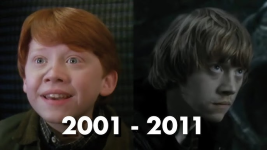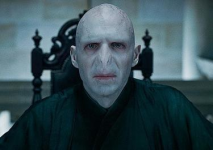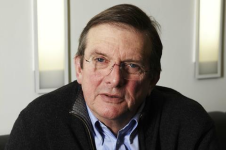Today I was chilling on the rooftop with The Sandman by Neil Gaiman.
I picked it up after the Netflix series and got hooked. Then it hit me. How come we have never talked about Harry Potter here? The film series that sat with us for a whole decade.
Maybe your memory starts the same way mine does. A packed theater.
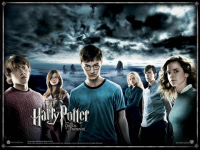
The smell of warm popcorn. That first swell of John Williams’ score that made your chest buzz. You lean forward, and there it is. A boy with a lightning scar stepping into a world that felt too big for the screen.
I always remember the tiny sounds.
The scrape of trunks on stone floors. Owls chattering in rafters. The whisper of robes when the Great Hall candles lifted. I went home trying “Wingardium Leviosa” on a spoon like it was a normal Saturday.
But here is the part we rarely talk about.
This decade of movie magic did not happen by accident. It started with a risky promise. Cast real kids and let them grow in front of us. Keep it British, from voices to village lanes. Build the world once, then live inside it. Could that work for ten years straight?
It did, and it changed the way big franchises get made.
The series stitched together a family of directors, craftspeople, and young actors who learned their lines and life at the same time. As the stories darkened, the films matured right along with us. That is why you can still press play today and feel your shoulders drop. Comfort with a shiver.
Today, I want to pull back the curtain on how the magic was built.
The casting choices that felt like destiny. The sets that became pilgrimage sites. The baton pass between directors, and why those shifts mattered. The practical tricks, the visual effects, the textures and rules that made Hogwarts feel like a place you could map.
Most of all, I want to show how the origin choices shaped the decade we grew up with. Because once you see the blueprint, every favorite moment clicks into place.
Ready to step back through the brick wall at Platform 9 and 3/4?
Simple image, small lightning scar, and a sense that something risky was coming. We were being asked to believe in a new kind of movie franchise, and everyone felt the risk.
The risk began long before cameras rolled.

Photo Credit: Collider
Producer David Heyman found the first book in his office and pushed for the films to be made, and Warner Bros. bought the film rights not long after. Rowling kept tight control over certain things, like asking that the main parts be played by British or Irish actors whenever possible.
Warner Bros. made a bold choice.
They wanted the movies to feel British and true to the books, and they wanted the kids to grow on screen. That meant casting real children, not older actors made up to look young, and committing to them for years. The studio also picked Chris Columbus to direct the first two films because they wanted someone who knew how to make films that spoke to children and families.
That plan shaped everything.
Filming began at Leavesden Studios in 2000, and the production used that same base for most of the series. Building a single physical home for the films let the crews return to the same sets and keep the world consistent as it changed with the story.
Casting the three leads was another big gamble that paid off. Daniel Radcliffe, Emma Watson, and Rupert Grint were mostly unknown when they were chosen out of thousands of kids who auditioned. The producers and J. K. Rowling liked what they saw on camera, and the trio’s chemistry became the heart of the films.
Warner Bros. also mapped a long run of films from the start.
The series would span 2001 to 2011, and that decision (making eight films over a decade) was as risky as it was rare. Committing to that length meant the studio, the cast, and the crew all had to grow together.
Why this gamble mattered then: it let the movies change with the story and the actors. It made the world feel lived in instead of patched together. And when we first sat down in those theaters, that careful, steady commitment is what made the films feel like they belonged to us.
That quick look between the three of them, and you know something honest is happening. You feel like you are meeting friends for the first time.
Warner Bros. ran a long search for the kids.
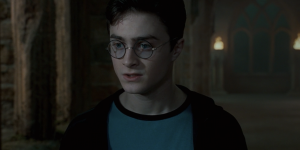
Daniel Radcliffe was noticed by producer David Heyman in a theatre, and they filmed his audition. Heyman later said he saw something curious and hungry in Radcliffe that fit the part. Rowling liked the filmed test and backed him.
Emma Watson and Rupert Grint were also fresh faces, picked from thousands of children who tried out. Both had almost no screen experience, just school plays, but the casting team saw a spark. Watson was ten, Grint eleven when they were cast.
The decision to hire unknown British kids was part of a larger choice to keep the films grounded and local. That Britishness was not a gimmick, it was a rule J. K. Rowling asked for, and the studio largely followed.
Why did that gamble work?
Because the trio felt like a real group of friends, not actors pretending to be close.
Their small gestures, like Ron’s nervous grin, Hermione’s quick eye roll, and Harry’s quiet watchfulness, made scenes ring true. Critics later called the casting one of the sharpest moves in show business for the decade.
What you notice when you rewatch is not just the lines, but how they listen to each other. That gave the films a centre. It let the story grow up without losing the sense that these were kids, learning, making mistakes, and trying again.
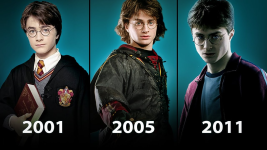
Photo Credit: Metapress
On screen Harry is quiet, watchful, and stubborn in the cleanest way. Daniel Radcliffe was a mostly unknown kid when producers spotted him and filmed his audition, and that small, steady presence became the story’s anchor.
What makes Harry work on film is how he listens. He is not loud, he reacts.
You feel every small surprise on his face. Think of the tight close ups on his eyes in early scenes, the way the camera stays close when danger arrives. That intimacy kept the films honest as the plots grew heavier. When the score swells on his name, you know who the story belongs to.
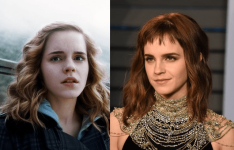
Emma Watson was just ten when she was cast, and that bright, practical energy carried the role.
Her strength is precise and human. She corrects a pronunciation, she opens a book, she loses her temper when a friend is hurt.
On screen those small gestures become shorthand for loyalty. Do you remember the clack of her shoes in the corridors, the way she tucks hair behind an ear before she speaks? Those tiny, repeatable moves make her feel like someone you could borrow notes from.
He was eleven when cast, and his casual grin and timing brought relief to tense scenes.
Ron is loyal and raw. He gets jealous, he jokes, he cries. That mix makes him believable. Watch the small things, like how he shoves his hair back when embarrassed, or how he looks at Harry for permission before stepping into danger.
Those moments tell you he is brave because he chooses to be, not because he is born that way.
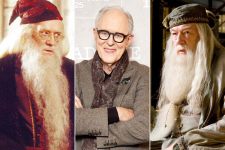
On screen Dumbledore is quiet power.
He speaks in soft sentences that hold weight. You notice the pause before he gives advice, the small smile that changes a room. He is a shelter and a puzzle at once.
That mix made him more than a wise teacher, he became the keeper of the story’s moral weight.
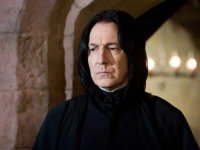
Alan Rickman’s performance provided layers without spelling them out, and that careful choice in casting gave the character a long, slow burn that paid off over the whole series.
He moves like someone who has practiced control.
A clipped voice, a measured step, a glance that reads as both judgment and pain. Those small, repeated details made every reveal land harder. Snape kept you guessing because the film never rushed his truth.
When the final pieces fall into place, you can trace them back to the smallest choices in posture and tone.
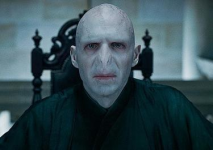
The films treat him as a threat that grows shape and sound over time. That slow construction, and the choice to let fear creep in before full display, made the final confrontations feel earned.
What lingers is the quiet before he appears.
Cold air, sudden silence, characters pausing mid-step.
When he does show, it is not just makeup and effects, it is the reaction he pulls from the others. That is what made him frightening then and still unsettling when you rewatch.
It is not just a different look. It is a different way of listening to the actors and a different answer to the question, how dark should this world be?
Chris Columbus set the opening rules. He framed the early films like storybooks, warm and steady, so we could meet the world and the kids without shock. That safe base let the actors settle into their roles.
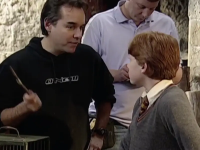
Then Alfonso Cuarón took the wheel for the third film and shifted the lens.
The camera grew looser, the colors turned cooler, and the story gave space for the characters to breathe and feel older. It did not abandon the rules Columbus set, it stretched them so the films could follow real growing pains.
Mike Newell handled the fourth film, and his eye brought a grittier, more awkward teenage energy. The Yule Ball scenes felt quieter and more complicated, and the darker moments landed with a sting. Finally David Yates took over and guided the last four films into politics and war, tightening the pace and leaning into the idea that this school was part of a larger, dangerous world.
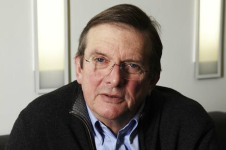
Why these handoffs worked is simple.
Each director kept the story’s core rules and the world’s textures, while bringing a new beat to match the actors as they grew. The change in tone felt earned because the actors actually aged on screen. We were not being asked to accept a new voice overnight, we were watching the same characters change under different directors who knew how to read that growth.
What it taught the industry is clear.
You can keep a single world steady and still let different filmmakers bring fresh answers as the story moves forward. That is part of why the series never felt stale. It felt like a book that kept turning its pages, each chapter handled by someone who understood the next step.
John Williams wrote the music that set the sound of the world.
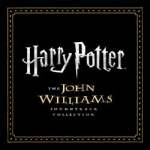
His themes lodged in our heads and kept returning as the films grew darker. Later composers kept parts of Williams’ work and added new colors so the score matched the mood of each film. The final recordings for the series were done with major orchestras at Abbey Road.
The same careful rule applied to the visual trickery.
Creature work, flight scenes, spells, and large crowd battles mixed practical builds with models and digital work. Big VFX houses pitched in, but the series also pushed the British effects industry to grow. In other words, the films did practical work first, then used digital effects to extend or clean up what was already there. That choice made moments like a Patronus or a flying broom feel physical, not flat.
When music repeats, memory lines up. When effects obey rules and textures feel real, danger and wonder have weight. That mix kept the films feeling honest as the stakes rose.
The films arrived like a calendar you could mark.
New releases felt like the start of a school year. Fans built small rituals around that rhythm. Platform 9 3/4 at King’s Cross became a real visit spot, and the Leavesden base later opened as a studio tour so people could walk the halls and see the props. The series even spun out theme park lands and rides at Universal parks around the world.
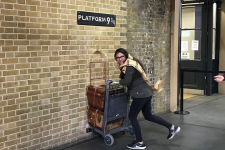
Photo Credit: Tripadvisor
Those rituals mattered because they made the films public.
They were not just private shows you watched alone. They gave fans things to do together, places to gather, and small traditions to pass along. The studio tour and parks turned movie sets into places people could touch. That turned watching into visiting, and visiting into memory.
The films made a big mark.
Together they sit among the highest-grossing franchises, earning billions worldwide. The final films closed a long run, but they also opened gates. Spin-offs, stage works, and new games kept the world alive.
Warner Bros. and others went on to build prequels and a wider “Wizarding World,” and stage and streaming projects kept inviting new generations to the table.
That legacy is practical as well as emotional.
The films showed how to keep a single world steady over many years while letting different filmmakers add fresh takes. They shaped how studios think about long stories and shared production bases.
They also left a set of films people return to for comfort, and a larger franchise that keeps sending out new doors to open.
They feel familiar and strange at the same time. That is the point. The choice to build real places, to cast kids who grew up on screen, and to pass the story between directors created more than hits. It made a living world you could return to.
Those origin choices gave the films staying power.
They turned premieres into rituals, sets into places people visit, and a movie run into a decade people remember together. The Wizarding World now has spin-offs and tours, but the films remain the place most of us first learned the rules of this world.
If you want comfort, pick a film and press play. If you want to study craft, watch how a chair, a score, or a cast change a single scene. Either way, those first choices still do the heavy lifting.
They are why the decade of movies we grew up with keeps coming back to life.
Did you watch Harry Potter back then? What are your memories?
I picked it up after the Netflix series and got hooked. Then it hit me. How come we have never talked about Harry Potter here? The film series that sat with us for a whole decade.
Maybe your memory starts the same way mine does. A packed theater.

The smell of warm popcorn. That first swell of John Williams’ score that made your chest buzz. You lean forward, and there it is. A boy with a lightning scar stepping into a world that felt too big for the screen.
I always remember the tiny sounds.
The scrape of trunks on stone floors. Owls chattering in rafters. The whisper of robes when the Great Hall candles lifted. I went home trying “Wingardium Leviosa” on a spoon like it was a normal Saturday.
But here is the part we rarely talk about.
This decade of movie magic did not happen by accident. It started with a risky promise. Cast real kids and let them grow in front of us. Keep it British, from voices to village lanes. Build the world once, then live inside it. Could that work for ten years straight?
It did, and it changed the way big franchises get made.
The series stitched together a family of directors, craftspeople, and young actors who learned their lines and life at the same time. As the stories darkened, the films matured right along with us. That is why you can still press play today and feel your shoulders drop. Comfort with a shiver.
Today, I want to pull back the curtain on how the magic was built.
The casting choices that felt like destiny. The sets that became pilgrimage sites. The baton pass between directors, and why those shifts mattered. The practical tricks, the visual effects, the textures and rules that made Hogwarts feel like a place you could map.
Most of all, I want to show how the origin choices shaped the decade we grew up with. Because once you see the blueprint, every favorite moment clicks into place.
Ready to step back through the brick wall at Platform 9 and 3/4?
Where It All Started: Background Story
I still picture that first teaser poster on the cinema wall.Simple image, small lightning scar, and a sense that something risky was coming. We were being asked to believe in a new kind of movie franchise, and everyone felt the risk.
The risk began long before cameras rolled.

Photo Credit: Collider
Producer David Heyman found the first book in his office and pushed for the films to be made, and Warner Bros. bought the film rights not long after. Rowling kept tight control over certain things, like asking that the main parts be played by British or Irish actors whenever possible.
Warner Bros. made a bold choice.
They wanted the movies to feel British and true to the books, and they wanted the kids to grow on screen. That meant casting real children, not older actors made up to look young, and committing to them for years. The studio also picked Chris Columbus to direct the first two films because they wanted someone who knew how to make films that spoke to children and families.
That plan shaped everything.
Filming began at Leavesden Studios in 2000, and the production used that same base for most of the series. Building a single physical home for the films let the crews return to the same sets and keep the world consistent as it changed with the story.
Casting the three leads was another big gamble that paid off. Daniel Radcliffe, Emma Watson, and Rupert Grint were mostly unknown when they were chosen out of thousands of kids who auditioned. The producers and J. K. Rowling liked what they saw on camera, and the trio’s chemistry became the heart of the films.
Warner Bros. also mapped a long run of films from the start.
The series would span 2001 to 2011, and that decision (making eight films over a decade) was as risky as it was rare. Committing to that length meant the studio, the cast, and the crew all had to grow together.
Why this gamble mattered then: it let the movies change with the story and the actors. It made the world feel lived in instead of patched together. And when we first sat down in those theaters, that careful, steady commitment is what made the films feel like they belonged to us.
Finding Harry, Ron, and Hermione
I still get a small jolt watching that first train compartment scene.That quick look between the three of them, and you know something honest is happening. You feel like you are meeting friends for the first time.
Warner Bros. ran a long search for the kids.

Daniel Radcliffe was noticed by producer David Heyman in a theatre, and they filmed his audition. Heyman later said he saw something curious and hungry in Radcliffe that fit the part. Rowling liked the filmed test and backed him.
Emma Watson and Rupert Grint were also fresh faces, picked from thousands of children who tried out. Both had almost no screen experience, just school plays, but the casting team saw a spark. Watson was ten, Grint eleven when they were cast.
The decision to hire unknown British kids was part of a larger choice to keep the films grounded and local. That Britishness was not a gimmick, it was a rule J. K. Rowling asked for, and the studio largely followed.
Why did that gamble work?
Because the trio felt like a real group of friends, not actors pretending to be close.
Their small gestures, like Ron’s nervous grin, Hermione’s quick eye roll, and Harry’s quiet watchfulness, made scenes ring true. Critics later called the casting one of the sharpest moves in show business for the decade.
What you notice when you rewatch is not just the lines, but how they listen to each other. That gave the films a centre. It let the story grow up without losing the sense that these were kids, learning, making mistakes, and trying again.
The Characters That Made Us Love the Harry Potter Series
Harry Potter
You meet him the way you meet a shy neighbor, then you keep coming back.
Photo Credit: Metapress
On screen Harry is quiet, watchful, and stubborn in the cleanest way. Daniel Radcliffe was a mostly unknown kid when producers spotted him and filmed his audition, and that small, steady presence became the story’s anchor.
What makes Harry work on film is how he listens. He is not loud, he reacts.
You feel every small surprise on his face. Think of the tight close ups on his eyes in early scenes, the way the camera stays close when danger arrives. That intimacy kept the films honest as the plots grew heavier. When the score swells on his name, you know who the story belongs to.
Hermione Granger
Hermione arrives like someone with a plan and the patience to see it through.
Emma Watson was just ten when she was cast, and that bright, practical energy carried the role.
Her strength is precise and human. She corrects a pronunciation, she opens a book, she loses her temper when a friend is hurt.
On screen those small gestures become shorthand for loyalty. Do you remember the clack of her shoes in the corridors, the way she tucks hair behind an ear before she speaks? Those tiny, repeatable moves make her feel like someone you could borrow notes from.
Ron Weasley
Rupert Grint’s Ron is the warm, nervous center who keeps the trio from turning too serious.Ron is loyal and raw. He gets jealous, he jokes, he cries. That mix makes him believable. Watch the small things, like how he shoves his hair back when embarrassed, or how he looks at Harry for permission before stepping into danger.
Those moments tell you he is brave because he chooses to be, not because he is born that way.
Albus Dumbledore
Dumbledore reads like a map of memory and calm. The adult cast around the kids, including veteran actors, gave the films a steady backbone that let younger performers take risks.
On screen Dumbledore is quiet power.
He speaks in soft sentences that hold weight. You notice the pause before he gives advice, the small smile that changes a room. He is a shelter and a puzzle at once.
That mix made him more than a wise teacher, he became the keeper of the story’s moral weight.
Severus Snape
Snape is a wound and a weather vane.
Alan Rickman’s performance provided layers without spelling them out, and that careful choice in casting gave the character a long, slow burn that paid off over the whole series.
He moves like someone who has practiced control.
A clipped voice, a measured step, a glance that reads as both judgment and pain. Those small, repeated details made every reveal land harder. Snape kept you guessing because the film never rushed his truth.
When the final pieces fall into place, you can trace them back to the smallest choices in posture and tone.
Lord Voldemort
Voldemort is absence made visible.
The films treat him as a threat that grows shape and sound over time. That slow construction, and the choice to let fear creep in before full display, made the final confrontations feel earned.
What lingers is the quiet before he appears.
Cold air, sudden silence, characters pausing mid-step.
When he does show, it is not just makeup and effects, it is the reaction he pulls from the others. That is what made him frightening then and still unsettling when you rewatch.
The Baton Pass, Four Directors, One Growing Story
You can feel the films change when the director changes.It is not just a different look. It is a different way of listening to the actors and a different answer to the question, how dark should this world be?
Chris Columbus set the opening rules. He framed the early films like storybooks, warm and steady, so we could meet the world and the kids without shock. That safe base let the actors settle into their roles.

Then Alfonso Cuarón took the wheel for the third film and shifted the lens.
The camera grew looser, the colors turned cooler, and the story gave space for the characters to breathe and feel older. It did not abandon the rules Columbus set, it stretched them so the films could follow real growing pains.
Mike Newell handled the fourth film, and his eye brought a grittier, more awkward teenage energy. The Yule Ball scenes felt quieter and more complicated, and the darker moments landed with a sting. Finally David Yates took over and guided the last four films into politics and war, tightening the pace and leaning into the idea that this school was part of a larger, dangerous world.

Why these handoffs worked is simple.
Each director kept the story’s core rules and the world’s textures, while bringing a new beat to match the actors as they grew. The change in tone felt earned because the actors actually aged on screen. We were not being asked to accept a new voice overnight, we were watching the same characters change under different directors who knew how to read that growth.
What it taught the industry is clear.
You can keep a single world steady and still let different filmmakers bring fresh answers as the story moves forward. That is part of why the series never felt stale. It felt like a book that kept turning its pages, each chapter handled by someone who understood the next step.
The Sound of Magic and the Craft of Illusion
Two notes of Hedwig’s Theme and I am back in a sticky cinema seat, cola sweating on the armrest. Music does that. It cuts a groove in memory and then pulls you back.John Williams wrote the music that set the sound of the world.

His themes lodged in our heads and kept returning as the films grew darker. Later composers kept parts of Williams’ work and added new colors so the score matched the mood of each film. The final recordings for the series were done with major orchestras at Abbey Road.
The same careful rule applied to the visual trickery.
Creature work, flight scenes, spells, and large crowd battles mixed practical builds with models and digital work. Big VFX houses pitched in, but the series also pushed the British effects industry to grow. In other words, the films did practical work first, then used digital effects to extend or clean up what was already there. That choice made moments like a Patronus or a flying broom feel physical, not flat.
When music repeats, memory lines up. When effects obey rules and textures feel real, danger and wonder have weight. That mix kept the films feeling honest as the stakes rose.
From School-Year Rituals to Cultural Rituals
I remember lining up for a midnight premiere, the lights low, people whispering plot guesses. Those nights felt like homework turned into a party.The films arrived like a calendar you could mark.
New releases felt like the start of a school year. Fans built small rituals around that rhythm. Platform 9 3/4 at King’s Cross became a real visit spot, and the Leavesden base later opened as a studio tour so people could walk the halls and see the props. The series even spun out theme park lands and rides at Universal parks around the world.

Photo Credit: Tripadvisor
Those rituals mattered because they made the films public.
They were not just private shows you watched alone. They gave fans things to do together, places to gather, and small traditions to pass along. The studio tour and parks turned movie sets into places people could touch. That turned watching into visiting, and visiting into memory.
Legacy, Rewatch Comfort, and New Doors Opening
Sometimes I press play on Prisoner of Azkaban when I need steady company. It calms and stirs at once.The films made a big mark.
Together they sit among the highest-grossing franchises, earning billions worldwide. The final films closed a long run, but they also opened gates. Spin-offs, stage works, and new games kept the world alive.
Warner Bros. and others went on to build prequels and a wider “Wizarding World,” and stage and streaming projects kept inviting new generations to the table.
That legacy is practical as well as emotional.
The films showed how to keep a single world steady over many years while letting different filmmakers add fresh takes. They shaped how studios think about long stories and shared production bases.
They also left a set of films people return to for comfort, and a larger franchise that keeps sending out new doors to open.
Wrap-Up: Why the First Build Still Matters
Sometimes I sit on the rooftop, book in hand, and the films rush back like a sound track.They feel familiar and strange at the same time. That is the point. The choice to build real places, to cast kids who grew up on screen, and to pass the story between directors created more than hits. It made a living world you could return to.
Those origin choices gave the films staying power.
They turned premieres into rituals, sets into places people visit, and a movie run into a decade people remember together. The Wizarding World now has spin-offs and tours, but the films remain the place most of us first learned the rules of this world.
If you want comfort, pick a film and press play. If you want to study craft, watch how a chair, a score, or a cast change a single scene. Either way, those first choices still do the heavy lifting.
They are why the decade of movies we grew up with keeps coming back to life.
Did you watch Harry Potter back then? What are your memories?


